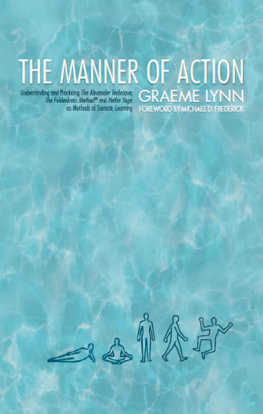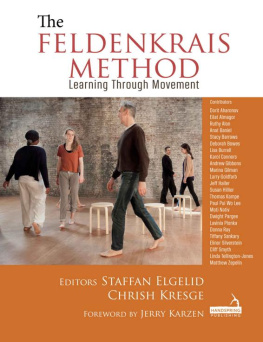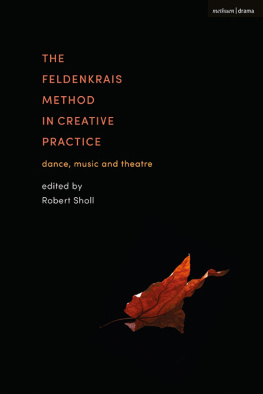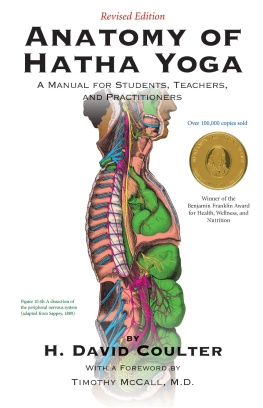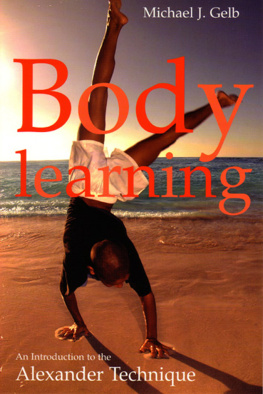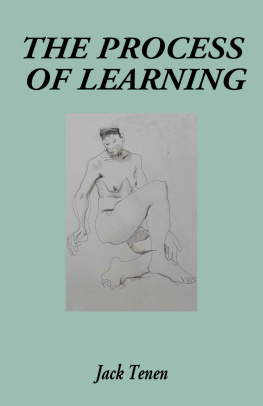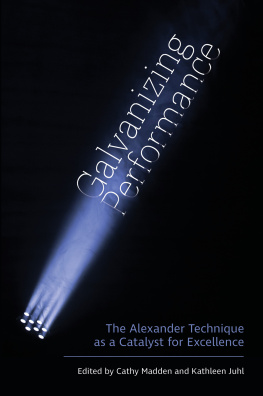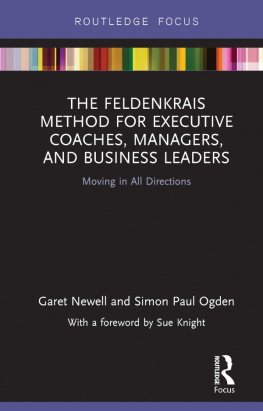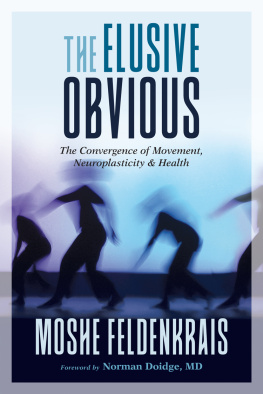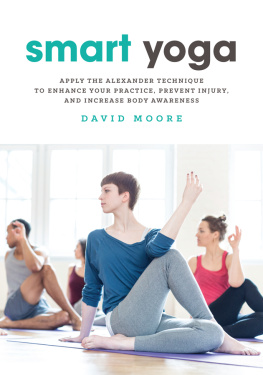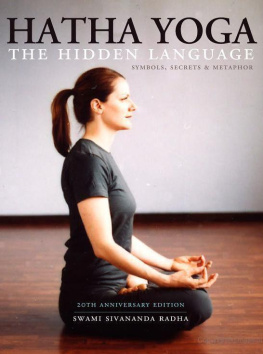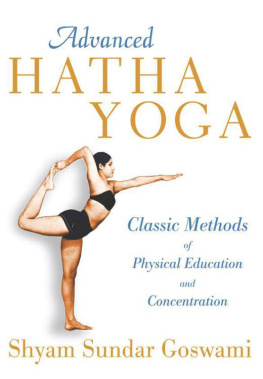
AWAKENING SOMATIC INTELLIGENCE
Understanding, Learning and Practicing the Alexander Technique, Feldenkrais Method and Hatha Yoga
Graeme Lynn
Foreword by Michael D. Frederick

LONDON AND PHILADELPHIA
Contents
THE NATURAL STATE
I am simply describing your ordinary state. You are functioning as awareness, then intelligence, associated with mind, emotion and body. In the Hindu tradition, the structure is described in terms of sheaths, the more outer being the physical, then the dimensions of natural energy and the emotional aspects of the person, then mind-forms and the psychic life, then this intelligence that observes it and that should be the controller of it, and, deeper than that, the awareness itself. The bodymind is described from the periphery to the centre as a collection of sheaths, with awareness at the center and the body and its field of activities at the periphery. This is simply an educational model to help people understand just how they are functioning in ordinary terms.
Adi Da Samraj
Monk: How then do we attain freedom?
Master: From the first, we have never been in bondage, and therefore there is no need to seek freedom. Just use the ways of freedom, act in freedom this is indeed incomparable.
Zen story
Apollo
Well never know his mythic head or blazing eyes,
And yet his torso, even now,
Stands here full charged with brilliance like a beacon
In which his ripened gaze, now turned down low,
Still shines in all its power.
Otherwise the curving breast could not so dazzle us
Nor could a smile descend
To those dark loins whence all of procreation flares.
Otherwise the stone would seem disfigured
In its falling from the lucent shoulders,
Not glisten like a lions mane,
Would not from all its boundaries
Burst outwards like a star.
For here there is no place that is not seen.
I must transform my life.
Rainer Maria Rilke
Introduction
THE INFINITE NETWORK OF POSSIBILITY
Imagine you are walking down a country road at dusk and, looking in the distance and through the dimming light, you see a darkened figure approaching you on foot. The shadows of the evening deepening into night conceal the clothes and persons features from the eye. How is it then you know and can recognize a friend?
You know because your friend and each of us organize ourselves in movement in a personally unique manner. This characteristic patterning derives in part from our inheritance but in larger measure from our experiential learning and we are active as that patterning, generally unconsciously, in everything we do.
What we inherit through our family of origin in physical terms remains a subject of research: organic strengths and weaknesses, bone structure and body type, facial features and so forth. The means whereby we learn and all of what we learn in terms of action patterns, movement and coordination are a more complex matter. In Ida Rolfs text, The Integration of Human Structures , she tells the story of a man who suffered severe injuries to a leg and his pelvis in the Second World War and who, though he lived and was otherwise healthy, consequently walked with a pronounced limp. After the war he married and had a son. Remarkably, before the boy had reached puberty he limped in the same way as his father.
This is not some weird and isolated aberration. We are each of us like that child in many complicated ways.
The ability of the human nervous system to learn, through which we adapt and change, is immense and subtle. We do not learn merely through imitation as in that story. Our physical development altogether, while guided genetically, is in part an open-ended process of functional learning. Our bodily expression of emotional character and fundamental beliefs is largely a matter of learning. How we adapt to and manifest ourselves physically in social interactions, work and play is learned. Also, as the mechanism reflexively responds to stress, injury, traumas of every kind, even disease, poor nutrition and surgery, how those responses are habituated is learning.
Stress, trauma, feeling, believing, imitation and development, in fact any experience or factor that instigates or involves a physical expression or response, which response is repeated, makes for learning and specifically to our discussion here, sensorimotor learning. Most such learning occurs unconsciously and results in unconscious habits of self-organization , moving and sensing . As there are numberless learning possibilities so there are many ways for that process to go wrong.
The human structure, in terms of the skeleton and soft tissue, has a wide range of adaptability to patterns of self-organization or what Alexander called use . However, the chronic or recurrent aches and pains or worse, the rheumatic and arthritic conditions that many begin to suffer even in early adulthood, result from patterns of unconscious or habitual organization, or rather disorganization, which the structure can no longer tolerate. When stiffness, chronic tension or muscle contraction, chronic over-use or under-use, misalignment and sheering stresses, ischemia, hyper-mobility and so on go on too hard or too long pain begins and degenerative conditions result.
This deterioration can be reversed. Habitual patterns of poor self-organization and the consequent degeneration can be resolved through renewed sensorimotor learning. The Alexander Technique and the Feldenkrais Method represent the best in such ways of learning. Through these sophisticated learning methods a person becomes more sensitive to the quality of his or her movement and more integrated in movement and coordination. With time and practice, the sources of pain and decline are undone. The body is freed in action and regenerates.
There is a natural design of human function developed over the millions of years of our evolution in the context of gravity and each of us has an almost limitless capacity for learning in the form of our nervous system or natural intelligence. The Alexander Technique and the Feldenkrais Method take ingenious advantage of these facts and, through refined techniques of gentle manipulation, facilitate learning of greater sensitivity to the physical self and an improved quality of movement, no matter what the problematic causes. Soon a person can more easily come to feel when an action is not harmonious with the structure and more readily find a coordination that is functionally competent and feels good. In this way one resolves problems before or after they have set in and comes to enjoy greater pleasure and agility in the body as the common experience of everyday life.
Age is not an obstacle to such renewal. The possible connections in the human nervous system outnumber the stars in the galaxy. This virtually infinite network of possibility is the source of our almost unlimited capacity to learn or relearn. We use only a portion of these connections even in our prime. Many so-called signs of ageing pain, affliction and limitation are often the results of complex learned patterns that can be undone and remade through the means used in these methods. The Alexander Technique and the Feldenkrais Method open new neural pathways through focused lessons that address the individuals needs and interests. These lessons provide concentrated sensorimotor experience relevant to the persons present state that he or she therefore welcomes and enjoys. This design and enjoyment make such learning interesting, usable, potent and more direct than the trial-and-error learning of childhood. This is how these methods can effectively resolve functional limitations and other problems that may arise in the course of our lives and so enhance the quality of life.
Next page

